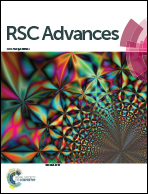Solution-processed Cu2SnS3 thin film solar cells†
Abstract
Cu2SnS3 as a promising candidate for the next generation of thin film solar cells still lacks of further understanding and study. In the present study, a simple solution method is described to fabricate monoclinic Cu2SnS3 thin films and their solar devices. With the utilization of a S + SnS mixture as an annealing atmosphere, we are able to tune the carrier concentration by over 2 orders of magnitude and achieve films with p-type doping of less than 1016 cm−3. For comparison, pure S and the S + Sn mixture are also listed. Cu2SnS3 thin films annealed with S + SnS mixture show good crystallinity, uniform surface potential and less surface defects, as well as good performance in the final solar device. The present findings may also provide significant insight in the design of efficient Cu2SnS3 based solar devices based on these advantages.


 Please wait while we load your content...
Please wait while we load your content...